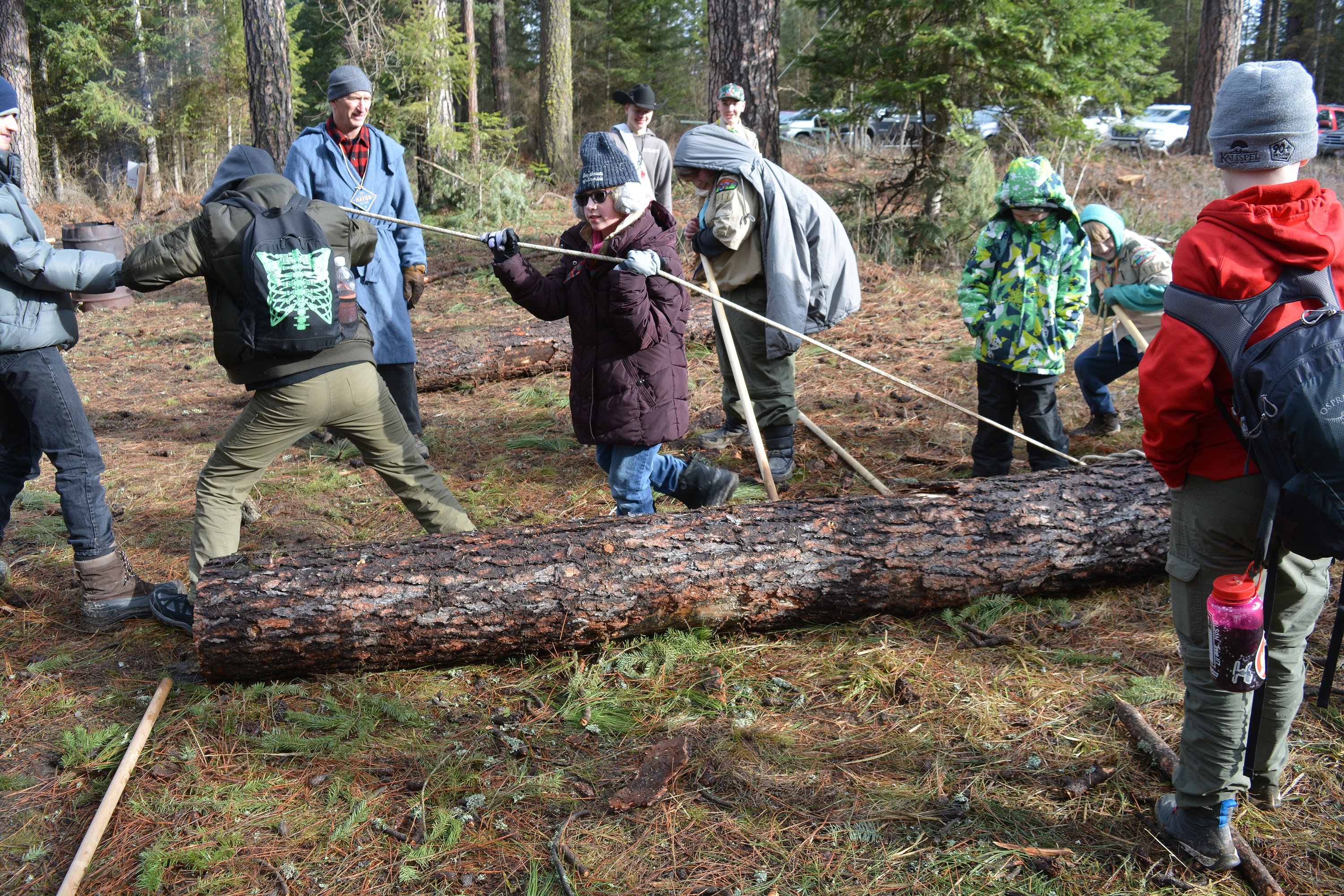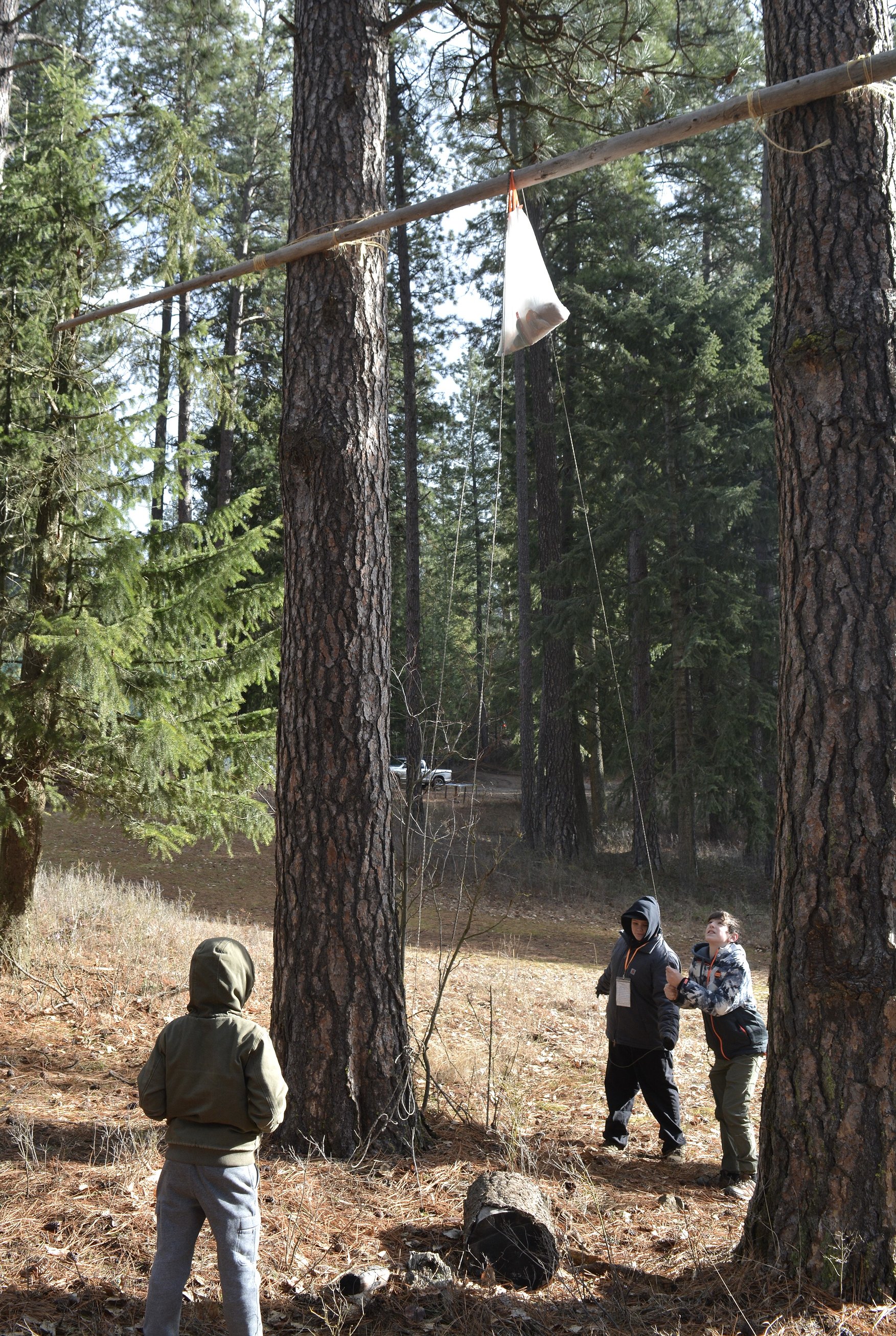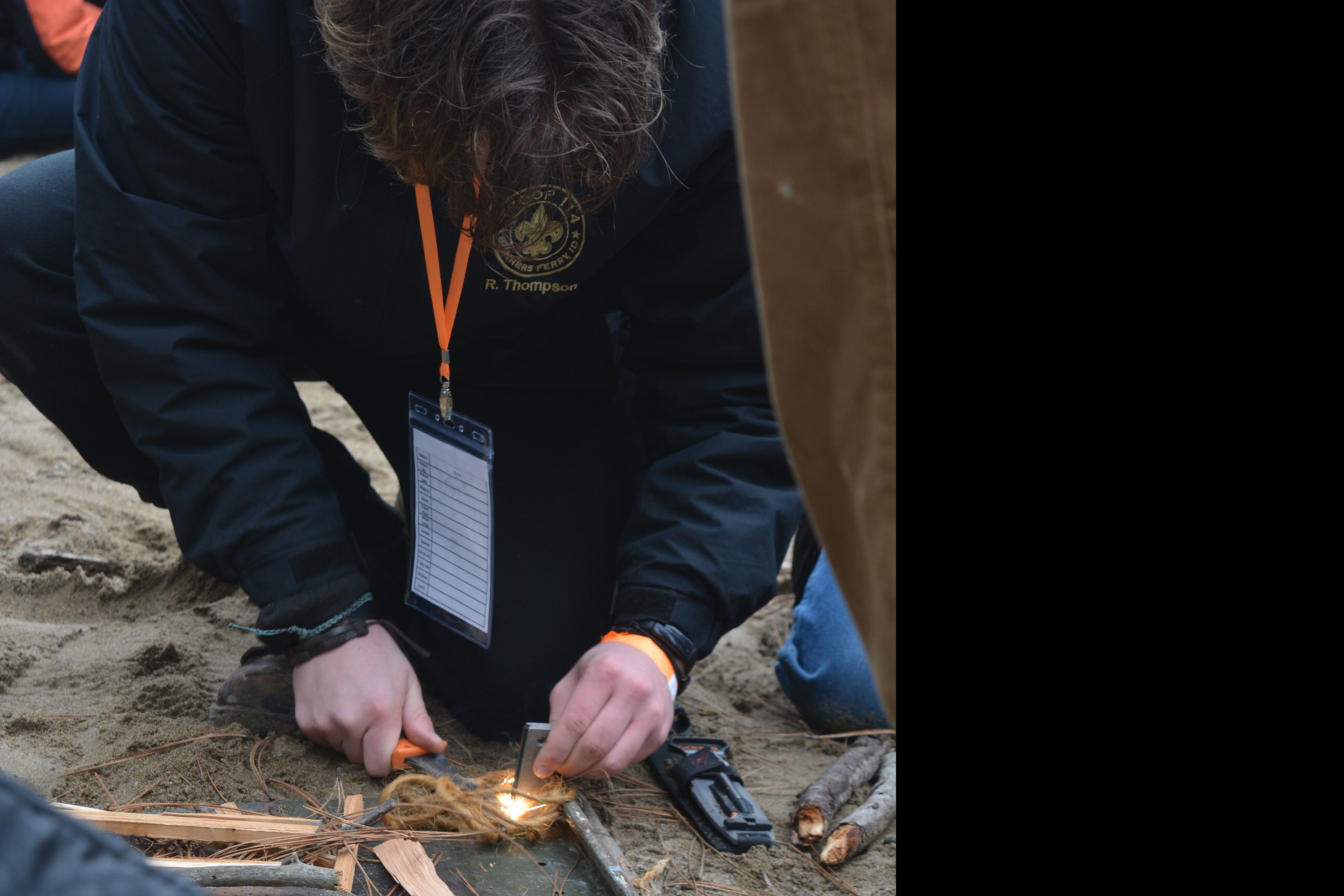To build a fire
HARRISON — Along the shoreline of Lake Coeur d’Alene, where Boy Scout troops tell stories of the legendary “snickerfish,” (a mythos often fed by some who place Snickers candy bars in the water for younger scouts to find), Riley Thompson was focused on one goal: Starting a fire.
Armed with twine, fire starter, a knife and kindling chopped with a hatchet by Jace Thompson, the troop from Bonners Ferry fought to beat the clock and build enough of a fire to cook a single pancake.
Their first attempt at a fire was accidentally smothered in the initial excitement from the group, but as the 20 minutes allotted to the challenge ticked down, they built the “house” frame of kindling methodically and set the pile ablaze in time to cook a pancake with minutes to spare.
The troop, along with about 20 others, made the trip to Camp Easton, near Harrison on the east side of Lake Coeur d'Alene, to participate in the Klondike Derby. The annual event is traditionally held in the winter months and draws on the history of the Klondike Gold Rush.
Overcoming challenges like a fire going out is built into the experience, said Jason Charland, program executive for the Inland Northwest Council of the Boy Scouts of America.
“This is a really good way to put their scout skills to the test. They’re having fun and they don’t realize they’re even learning stuff. They adapt to change and overcome while having fun in the outdoors,” Charland said.
Holding the event in winter with colder temperatures and more unpredictable conditions are key to instilling a healthy sense of preparedness among the scouts.
“Camping is a really important part of scouting, and camping in the winter takes a special amount of fortitude,” Charland said.
Charland said although the primary focus of the derby is on outdoor survival skills, the adults couldn’t resist adding a little extra mystique to the event by arranging for Sasquatch sightings throughout the day.
Coming face to face with a bear, however, is something the scouts are taught to avoid at all costs.
That’s where the bear bag station comes into play.
Members of Troop 22 from Spokane tied their rope to a small stick and used it as a weight before casting the rope over a wooden pole and back down to the ground. There was some last-minute deliberation about the best height for the bag filled with food and other supplies which could potentially be pungent odors to a bear (deodorant or toothpaste), but they passed the height check for bears.
“It wasn’t hard. I knew what we needed to do and what our goal was,” Cole Anderson said.
 The log roll station proved to be a tricky one for Mason Wilke, Emily Lehman, and Oliver Doughty. The troop tried to haul the log out of the starting area with a rope, but weren't able to accomplish the goal in 20 minutes. Afterwards, they strategized with the adults to strengthen their communication as a team and listen to each other's suggestions.
The log roll station proved to be a tricky one for Mason Wilke, Emily Lehman, and Oliver Doughty. The troop tried to haul the log out of the starting area with a rope, but weren't able to accomplish the goal in 20 minutes. Afterwards, they strategized with the adults to strengthen their communication as a team and listen to each other's suggestions. Dale Keiser and Cliff Garrison make "sugar crustos" for hungry scouts taking a break between challenges. The food also helped serve as an ice breaker for the recruiting drive for the order of the arrow. Scouts Ryker Smithson and Elias Owens prepare to enjoy the fried dough coated in cinnamon and sugar.
Dale Keiser and Cliff Garrison make "sugar crustos" for hungry scouts taking a break between challenges. The food also helped serve as an ice breaker for the recruiting drive for the order of the arrow. Scouts Ryker Smithson and Elias Owens prepare to enjoy the fried dough coated in cinnamon and sugar.










